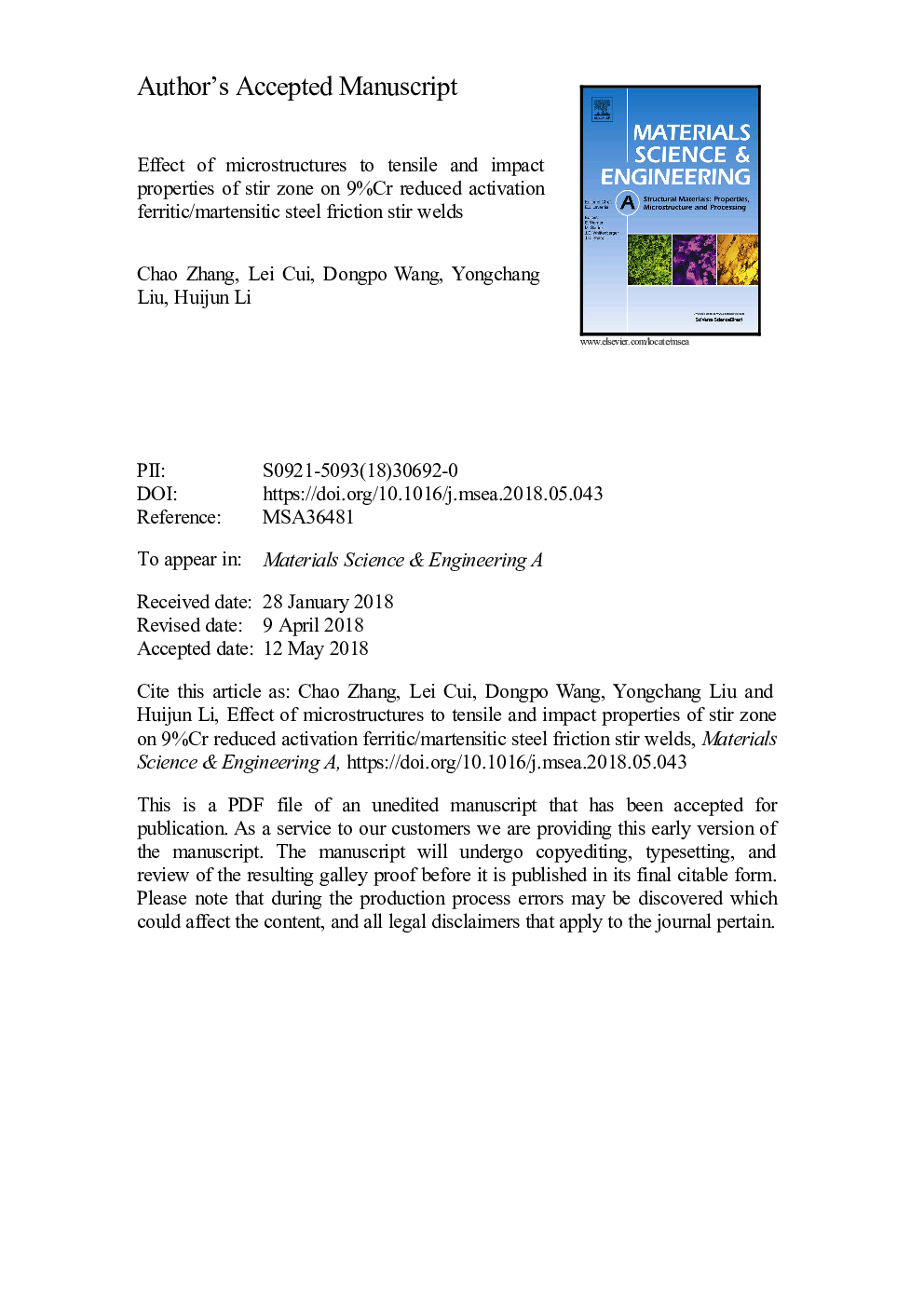| Article ID | Journal | Published Year | Pages | File Type |
|---|---|---|---|---|
| 7971925 | Materials Science and Engineering: A | 2018 | 20 Pages |
Abstract
The present study reports the microstructural evolution and mechanical properties of the stir zone (SZ) in friction stir welding (FSW) reduced activation ferritic/martensitic (RAFM) steel. The effects of the grain size, retained austenite (RA), and precipitates on the SZ tensile properties and impact toughness are discussed. The SZ of the weld exhibits a good balance of strength and ductility at 600â¯Â°C temperatures and a slightly decrease of impact toughness comparing with the base metal (BM). The RA plays a critical role in effecting the ductility and impact toughness of SZ. The influence of RA to the ductility of SZ becomes more effective as the carbon concentration of RA is increased to 1% or above where the thermal and mechanical stabilities are improved. The highly dispersed and refined MX carbonitrides and M3C carbides during FSW are good for the ductility and impact toughness of SZ as well. It indicates the SZ of FSW RAFM steel weld has the potential to have good mechanical properties.
Keywords
Related Topics
Physical Sciences and Engineering
Materials Science
Materials Science (General)
Authors
Chao Zhang, Lei Cui, Dongpo Wang, Yongchang Liu, Huijun Li,
